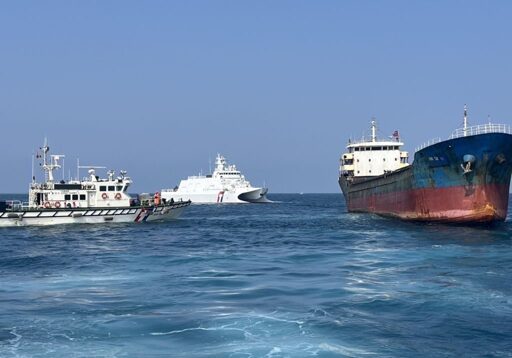China is using increasingly sophisticated grey-zone tactics against subsea cables in the waters around Taiwan, using a shadow-fleet playbook that could be expanded across the Indo-Pacific.
[…]
While China has targeted Taiwan’s undersea cables for years as part of its grey-zone operations, it has subtly shifted tactics. Previously, vessels involved in suspected acts of sabotage were registered to China. Now, they are increasingly operating under foreign flags, forming a shadow fleet. This strategy resembles Russia’s subsea cable tactics in the Baltic Sea.
[…]
States such as North Korea and Iran often use shadow fleets—ageing vessels registered under flags of convenience—to get around sanctions, to trade or transport illegal or prohibited goods, or to undertake illegal fishing. The vessels are operated through intricate corporate structures, with shell companies established in one country, management based in another and vessels registered elsewhere again, providing states with deniability. They use deceptive tactics including manipulating identification systems, turning off tracking systems and changing names and flags. If caught, vessels can be easily abandoned and their legal entities dissolved, rendering traditional countermeasures such as sanctions largely ineffective.
Since its invasion of Ukraine, Russia has relied on a large shadow fleet, not only to evade oil sanctions but also to conduct a campaign of hybrid warfare against NATO—including allegedly damaging European subsea cables and critical infrastructure.
[…]
Taiwan has taken note. In January, it blacklisted 52 Chinese-owned vessels suspected of operating as its shadow fleet registered in countries such as Cameroon, Tanzania, Mongolia, Togo and Sierra Leone. Following the recent cable-cutting incidents, Taiwanese authorities publicised detailed evidence—including vessel ownership, flag state and tracking system manipulation details—to pre-empt China’s denial. They have also been tracking and boarding suspicious vessels. Taiwan recently raised the alarm about a Russian-flagged vessel lurking for weeks over a subsea cable, recognising the growing coordination between China and Russia in hybrid warfare operations.
[…]
However, what happens in the Taiwan Strait will not stay in the Taiwan Strait. China’s shadow-fleet tactics are likely to expand across the Indo-Pacific, where maintaining a level of deniability would be beneficial. China already deploys grey-zone tactics in the region, from intimidation of vessels in the South China Sea and targeted incursions in disputed territorial waters, to strategic infrastructure investments that create leverage over its neighbours. Targeting subsea cable infrastructure is another tactic in Beijing’s coercion toolkit—one that targets connectivity while maintaining plausible deniability and operating in the grey-zones of international law and accountability.
The Indo-Pacific—with its vast maritime distances, congested shipping lanes and uneven surveillance capabilities—is fertile ground for such operations. Frequent accidental cable damage and existing territorial disputes may further complicate attribution and response. The region’s economic ties with China would make coordinating any responses even harder.
[…]
If recent incidents in the Baltic Sea and around Taiwan are any indication, disruptions in the Indo-Pacific are not a question of if, but when. The most effective counter to Beijing’s shadow-fleet operations is exposure through public attribution and communication. After all, a vessel cutting cables near a state’s shores may well be flying a neighbour’s flag but taking its orders from Beijing.


